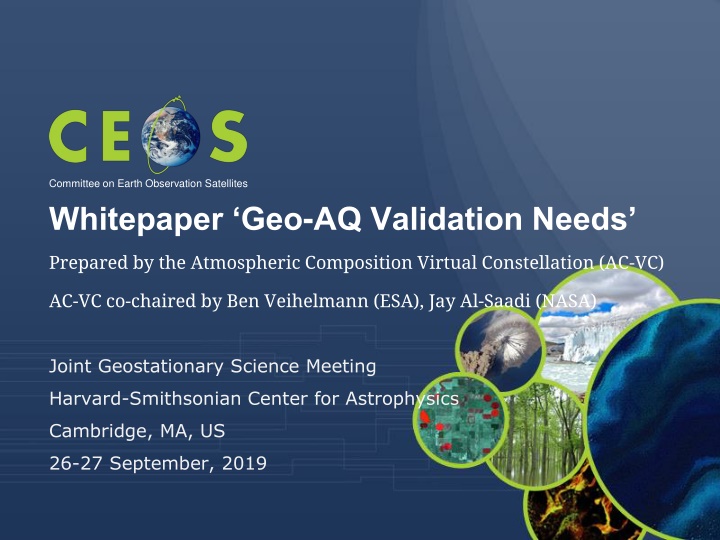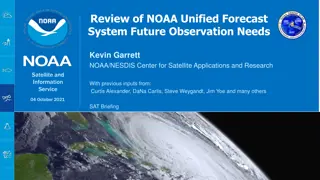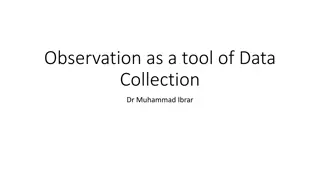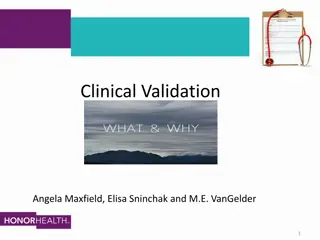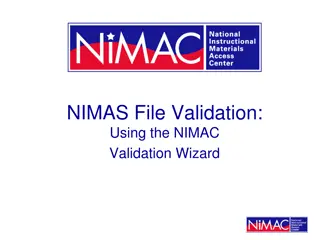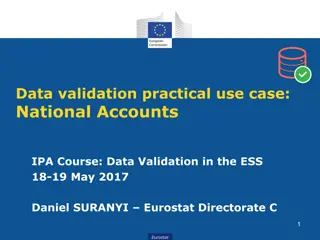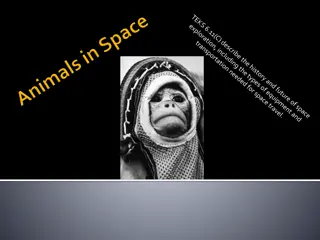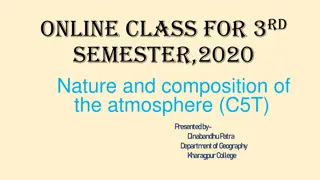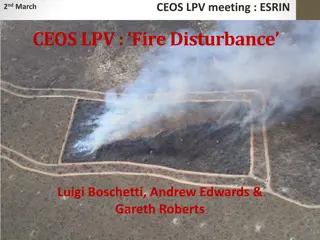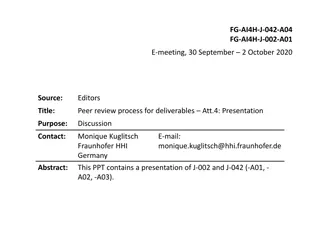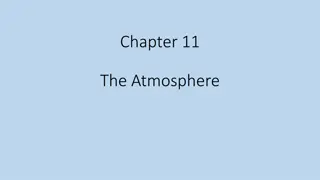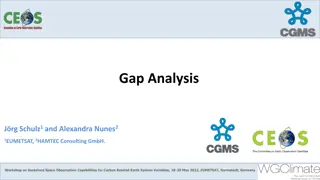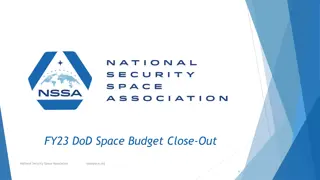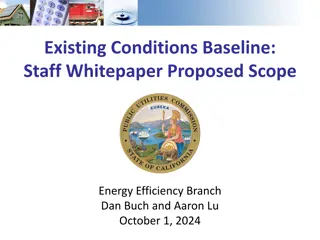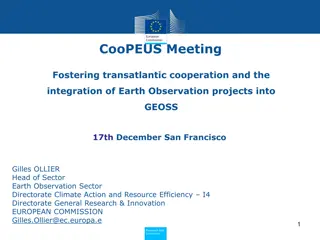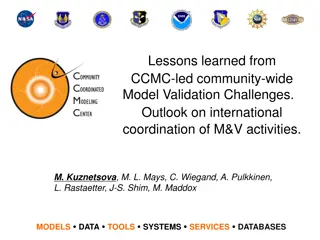Geo-AQ Validation Needs Whitepaper: Enhancing Space-based Observation Capabilities for Earth's Atmosphere
Elaborating on the validation needs of the Geo-AQ Constellation, this whitepaper focuses on new challenges in geostationary atmospheric composition missions. It aims to enhance mission success by establishing inter-mission consistency targets and monitoring product accuracy. The document identifies common products, sets targets, and outlines activities necessary for consistency assessment. Specific recommendations are provided for addressing challenges and ensuring coordination among missions.
Download Presentation

Please find below an Image/Link to download the presentation.
The content on the website is provided AS IS for your information and personal use only. It may not be sold, licensed, or shared on other websites without obtaining consent from the author.If you encounter any issues during the download, it is possible that the publisher has removed the file from their server.
You are allowed to download the files provided on this website for personal or commercial use, subject to the condition that they are used lawfully. All files are the property of their respective owners.
The content on the website is provided AS IS for your information and personal use only. It may not be sold, licensed, or shared on other websites without obtaining consent from the author.
E N D
Presentation Transcript
Committee on Earth Observation Satellites Whitepaper Geo-AQ Validation Needs Prepared by the Atmospheric Composition Virtual Constellation (AC-VC) AC-VC co-chaired by Ben Veihelmann (ESA), Jay Al-Saadi (NASA) Joint Geostationary Science Meeting Harvard-Smithsonian Center for Astrophysics Cambridge, MA, US 26-27 September, 2019
Overview Background Purpose of the Whitepaper Geo-AQ Validation Needs Contributors to the Whitepaper Structure / Table of Content Constellation products Consistency targets Recommendations Discussion Joint Geostationary Science Meeting, Sep 2019, Harvard-Smithsonian Center for Astrophysics, Cambridge, MA, USA 2
Background Committee on Earth Observation Satellites (CEOS) o Forum for international coordination of space-based Earth observations o Working groups, virtual constellations, ad-hoc teams, Atmospheric Composition Virtual Constellation (AC-VC) o Enhance space-based observation capabilities for: o Ozone layer, air quality, and climate o Through coordination of international space assets CEOS Work Plan Action VC-3: AC-VC to prepare a document on validation needs for the Geo-AQ Constellation o Final review during AC-VC-15, June 2019, Tokyo, Japan o Presented at CEOS SIT Technical Workshop, 11-12 Sep 2019 o Presented at CEOS Plenary 14-16 Oct 2019, for endorsement/acknowledgement Joint Geostationary Science Meeting, Sep 2019, Harvard-Smithsonian Center for Astrophysics, Cambridge, MA, USA 3
Purpose of the Geo-AQ Validation Needs Whitepaper Elaborate the validation needs of the Geo-AQ Constellation: focus on new challenges for geostationary atmospheric composition missions (new with respect to LEO heritage) enhancing the success of missions when seen as elements of a constellation Identify Constellation Products common to the Geo-AQ missions enhanced value by establishing and monitoring inter-mission consistency Set inter-mission consistency targets for Constellation Products taking into account individual product performances and the accuracy of validation methods Identify activities needed to assess and establish this consistency Activities to be performed consistently for each mission Activities addressing new Geo-AQ challenges and inter-mission consistency Coordination and continuity Make specific and actionable recommendations o o o o o o o o Joint Geostationary Science Meeting, Sep 2019, Harvard-Smithsonian Center for Astrophysics, Cambridge, MA, USA 4
Contributors to the Whitepaper The Whitepaper has been written by the science teams of the GEMS, Sentinel-4, and TEMPO missions and validation experts including Al-Saadi, Jay (NASA, USA; AC-VC) Cede, Alexander (Luftblick, AT, AC-VC) Chance, Kelly (SAO, USA; AC-VC) Flynn, Lawrence E. (NOAA, USA, AC-VC; GSICS) Kim, Jhoon (Yonsei University, Korea; AC-VC) Kim, Sang-Woo (Seoul National University, Korea, AC-VC) Koopman, Rob (ESA, EU) Lambert, Jean-Christopher (IASB-BIRA, Belgium; AC-VC; WGCV) Lindstrot, Rasmus (EUMETSAT, EU) Loyola, Diego (DLR, DE) Munro, Rose (EUMETSAT, EU; AC-VC; GSICS) Van Roozendael, Michel (IASB-BIRA, Belgium; AC-VC; WGCV) Veihelmann, Ben (ESA, EU; AC-VC) Wang, Jun (University of Iowa, USA; AC-VC) Yoon, Jongmin (National Institute of Environmental Research, Korea; AC-VC) Joint Geostationary Science Meeting, Sep 2019, Harvard-Smithsonian Center for Astrophysics, Cambridge, MA, USA 5
Structure / Table of Content of the Whitepaper Executive Summary (1/2 page) Summary of all Recommendations (1 page) Geo-AQ Missions and Related LEO Missions Product Consistency Across the Constellation Validation Needs Activities That Need to be Performed Consistently for Each Mission o Recommendations for Activities Addressing New Geo-AQ Challenges and Inter- mission Consistency o Coordination and Continuity o Reference Documents, List of Acronyms, Contributors, Annex: Geophysical Validation Infrastructure 40 pages without Annexes Joint Geostationary Science Meeting, Sep 2019, Harvard-Smithsonian Center for Astrophysics, Cambridge, MA, USA 6
Constellation Products Product / Parameter Comparable part Comment Level-1b solar irradiance Spectral subset 305 to 490 nm Level-1b Earth radiance Spectral subset 305 to 490 nm Reflectance Spectral subset 305 to 490 nm Differences in averaging kernels need to be accounted for. A sub-column covering the lower troposphere should be considered. Stratospheric and tropospheric sub- columns O3profile O3total column NO2total column SO2total column HCHO total column Slant and vertical columns Slant and vertical columns Additionally, total columns based on a commonly agreed retrieval approach should be considered. Slant and vertical columns Slant and vertical columns CHOCHO total column Slant and vertical columns Differences in approaches to separation of troposphere and stratosphere play a role. NO2tropospheric column Tropospheric sub-column Matching pairs of reference wavelengths (S4: 342, 368, 417, 443, 457 nm; TEMPO: 354 and 388 nm; GEMS: 443 nm) Different approaches for surface reflectance, aerosol microphysics, and aerosol layer height must be considered. AOD total column Joint Geostationary Science Meeting, Sep 2019, Harvard-Smithsonian Center for Astrophysics, Cambridge, MA, USA 7
Consistency Targets Level-2 Product / Parameter Maximum allowed Systematic difference Total column 1% Stratospheric column 5% O3 Tropospheric column 20% No target is identified. The consistency needs to be assessed. Lower tropospheric (0-6 km) column 1 1015molec/cm2 total column NO2 1 1015molec/cm2 tropospheric column 1 1016molec/cm2 SO2total column 1 1016molec/cm2 HCHO total column 4 1014molec/cm2 CHOCHO total column AOD total column 0.05 @ 440 nm Level-1b Earth radiance 2-5% Level-1b solar irradiance 1-2% Reflectance 2-5% Joint Geostationary Science Meeting, Sep 2019, Harvard-Smithsonian Center for Astrophysics, Cambridge, MA, USA 8
Recommendations formulated in the Whitepaper 1. Consistently perform intensive campaigns dedicated to the validation of the capability of the Geo-AQ missions to observe the diurnal cycle of the target species (several supersites within each Geo-AQ mission domain). Conduct joint validation campaigns with exchange of reference airborne and ground-based instruments. Further develop and eventually apply approaches to the radiometric inter-calibration of the Geo-AQ missions. These activities should be pursued within the frame of the WMO GSICS initiative. Further develop and eventually apply approaches to the inter-calibration of the Level-2 products of the Geo- AQ missions. Systematically process the Level-2 Constellation Products of the Geo-AQ missions, using one selected common algorithm per Constellation Product. Further pursue the harmonization of the reference data used for validation and inter-mission consistency verification of Level-2 products. Implement a data centre for storage and exchange of all validation data collected for the Geo-AQ missions, accessible to the entire community involved in the validation of the Geo-AQ mission products, very soon after acquisition. Implement a coordinating unit for ensuring the consistency of the approach and the metrics used for validating the Geo-AQ mission products and their inter-mission consistency. 2. 3. 4. 5. 6. 7. 8. Joint Geostationary Science Meeting, Sep 2019, Harvard-Smithsonian Center for Astrophysics, Cambridge, MA, USA 9
Discussion What can we do in this forum to address the recommendations? Which campaigns are planned / on the horizon? How will the validation activities be set up? What can be coordinated? Collaboration? Joint Geostationary Science Meeting, Sep 2019, Harvard-Smithsonian Center for Astrophysics, Cambridge, MA, USA 10
Ideas Collect real satellite and airborne data to assess diurnal biases (R1) Identify airborne sensors for exchange? (R2) What can be done pre-flight to ease the post-launch GSICS work on radiometric inter-calibration? (R3) Cross-processing of L1b data acquired by one satellite sensor in a validation campaign with multiple L2 algorithms from different missions? (R4) o Goal: quantify inter-mission product differences due to algorithm differences pre-flight testing of L2 algorithms with real L1b and reference data o Concerns: Schemes working well for one sensors might not work well for another Adaptations of L2 algorithms necessary L1b and reference data consolidated Not intended to be a ranking of L2 algorithms Not intended to put L1b features of one mission on the spot Joint Geostationary Science Meeting, Sep 2019, Harvard-Smithsonian Center for Astrophysics, Cambridge, MA, USA 11
